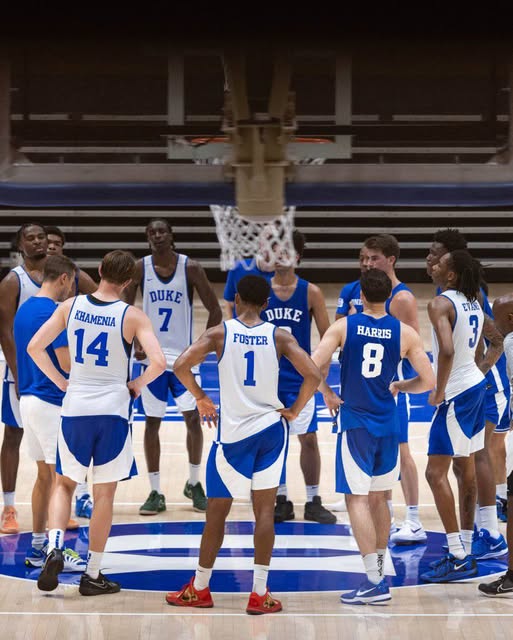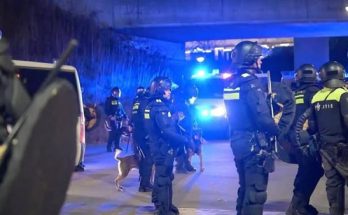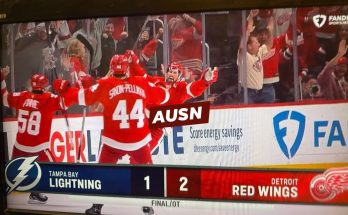DURHAM, NC – The air inside Cameron Indoor Stadium in mid-July is usually thick with the quiet hum of air conditioning and the distant echoes of past glories. But this summer, it pulses with a different kind of energy. Fourth-year head coach Jon Scheyer paces the baseline, his voice cutting through the squeak of sneakers as the 2025-26 Duke Blue Devils, a roster brimming with tantalizing talent and lofty expectations, push through grueling summer practices. The undeniable takeaway from these early, intense sessions? This Duke team could be truly elite… if they fix one pervasive flaw. And the revealing nature of these practices lays bare just how close, yet simultaneously how far, the Blue Devils are from their ultimate goal: a national championship.
The 2025-26 Duke roster is a fascinating blend. After losing key players like Cooper Flagg (the undisputed No. 1 pick in the 2025 NBA Draft), Tyrese Proctor, Kon Knueppel, Khaman Maluach, and Sion James to the professional ranks or graduation, Scheyer has once again orchestrated a masterful recruiting class while retaining critical pieces. The incoming freshmen, headlined by five-star talents like Cameron Boozer (PF), Cayden Boozer (PG), Nikolas Khamenia (SF), and international sensation Dame Sarr (SG), promise immediate impact. They join returning sophomores Isaiah Evans (G/F), Darren Harris (G/F), and Patrick Ngongba II (C), alongside junior Caleb Foster (G) and senior Maliq Brown (F). This mix provides a compelling combination of raw athleticism, developing skill, and a dash of veteran experience.
On paper, this team appears to have it all:
- Elite Offensive Firepower: Cameron Boozer is projected to be a dominant force from day one, with an elite feel for the game, capable of scoring inside and out. Isaiah Evans has shown flashes of being an elite movement shooter. Cayden Boozer brings high-level playmaking at the point guard spot. Nik Khamenia offers versatility and a high basketball IQ.
- Defensive Potential: With players like Maliq Brown, Patrick Ngongba II providing interior presence, and the defensive tools of Isaiah Evans, Dame Sarr, and Darren Harris on the perimeter, the theoretical framework for a strong defensive unit exists.
- Depth and Versatility: Scheyer has built a roster with positional versatility, allowing for various lineup combinations depending on matchups.
However, the summer practices, often a time for coaches to identify early strengths and weaknesses, have reportedly highlighted a persistent issue that, if left unaddressed, could very well derail their championship aspirations: consistent, high-level perimeter defense, particularly against quick, shifty guards and elite off-ball movement.
Sources close to the program indicate that while the individual defensive capabilities are present, the collective discipline, communication, and execution on the perimeter have been inconsistent. In drills emphasizing pick-and-roll defense and navigating screens, there have been too many instances of:
- Late Rotations and Closeouts: Players are occasionally a step slow in rotating to contest open shooters, allowing easy looks from beyond the arc.
- Struggling Through Screens: Opposing guards (even practice players or redshirts acting as scout team) have found too much success navigating through screens, either getting to the rim or creating open mid-range opportunities. This hints at a potential weakness in fighting over screens or in the big men’s ability to “hedge and recover” effectively.
- Lack of Communication on Switches: In scenarios designed to test their switching capabilities, there have been moments of confusion, leading to open driving lanes or uncontested shots. This often stems from a lack of vocal communication, which is paramount in Scheyer’s read-and-react defensive system.
- Ball-Watching and Losing Off-Ball Cutters: There are instances where players are too focused on the ball-handler, allowing their assignment to make easy backdoor cuts or flash to open spots on the baseline, resulting in uncontested layups or dunks.
Coach Scheyer, known for his analytical approach and intensity, has reportedly been vocal about this particular flaw. During one recent practice, after a series of breakdowns on the perimeter, he was heard exclaiming, “We can have all the talent in the world, but if we can’t guard the perimeter consistently, none of it matters! This is where championships are won and lost!”
The concern is not that these players cannot defend. Many of them possess the physical tools: length, athleticism, and quickness. The issue appears to be one of collective discipline, experience in Scheyer’s complex system, and the relentless focus required to execute high-level perimeter defense possession after possession against top-tier competition. The departure of Sion James, a seasoned and versatile perimeter defender, has left a void in terms of experienced defensive leadership on the wing. While newcomers like Dame Sarr bring international defensive savvy, it will take time for him to fully adapt to the speed and physicality of the ACC.
- Modern NBA Trends in College: The college game increasingly mirrors the NBA with its emphasis on guard play, pick-and-roll offense, and three-point shooting. Elite teams will exploit any weakness in perimeter defense.
- ACC Gauntlet: The ACC is consistently one of the toughest conferences in college basketball, filled with talented guards and well-coached offenses that will relentlessly attack defensive deficiencies.
- March Madness Exposure: In the NCAA Tournament, every possession is magnified. A single breakdown in perimeter defense can lead to an early exit against an underdog or a missed opportunity against a fellow contender.
- Maximizing Their Own Offense: While Duke’s offense is expected to be potent, their ability to get out in transition and play at a fast pace relies on generating defensive stops. Inconsistent perimeter defense leads to more half-court possessions, which can bog down their own offensive flow.
Despite this glaring flaw, the underlying optimism within the program is that this is a fixable problem, rather than an inherent talent deficiency.
- Coaching Emphasis: Scheyer’s focus on this issue in summer practices is a positive sign. His meticulous approach and insistence on defensive fundamentals suggest that they will dedicate significant time and effort to drills and film study.
- Talent and Athleticism: The raw materials are there. Players like Isaiah Evans, Caleb Foster, and the Boozer brothers all possess the athleticism and length to be good perimeter defenders. It’s about channeling that potential into consistent execution.
- Draymond Green-esque Mentality: While no current Duke player is a Draymond Green, the ethos of collective, vocal, and intelligent defense, a hallmark of the Golden State Warriors dynasty (which Scheyer witnessed firsthand), needs to be fully ingrained. Maliq Brown, with his defensive grit, can be a leader in this regard.
- Repetition and Chemistry: Summer practices, followed by fall workouts and non-conference play, offer ample opportunities to build defensive chemistry, learn rotations, and develop the instincts required for elite perimeter defense. It takes time for new pieces to gel, especially on defense.
- The “Duke Standard”: The tradition of Duke basketball emphasizes defense and toughness. This intrinsic pressure from the program’s legacy often motivates players to excel on that end of the floor.
Duke, under Jon Scheyer, is at a fascinating crossroads. They have attracted a recruiting class that could rival any in the nation, providing the raw talent necessary for a championship run. The summer practices have stripped away any illusions, revealing a team that is undeniably elite on paper, but critically vulnerable on the perimeter. The distance between “very good” and “elite” in college basketball is often measured in inches, in milliseconds of defensive rotations, and in the precision of communication. For Duke, reaching the summit this season hinges on whether they can collectively commit to, and execute, the relentless, suffocating perimeter defense that is the hallmark of true champions. If they can fix this one flaw, the ceiling for this Duke team is a national title. If not, they risk being another talented squad that falls short when it matters most.



